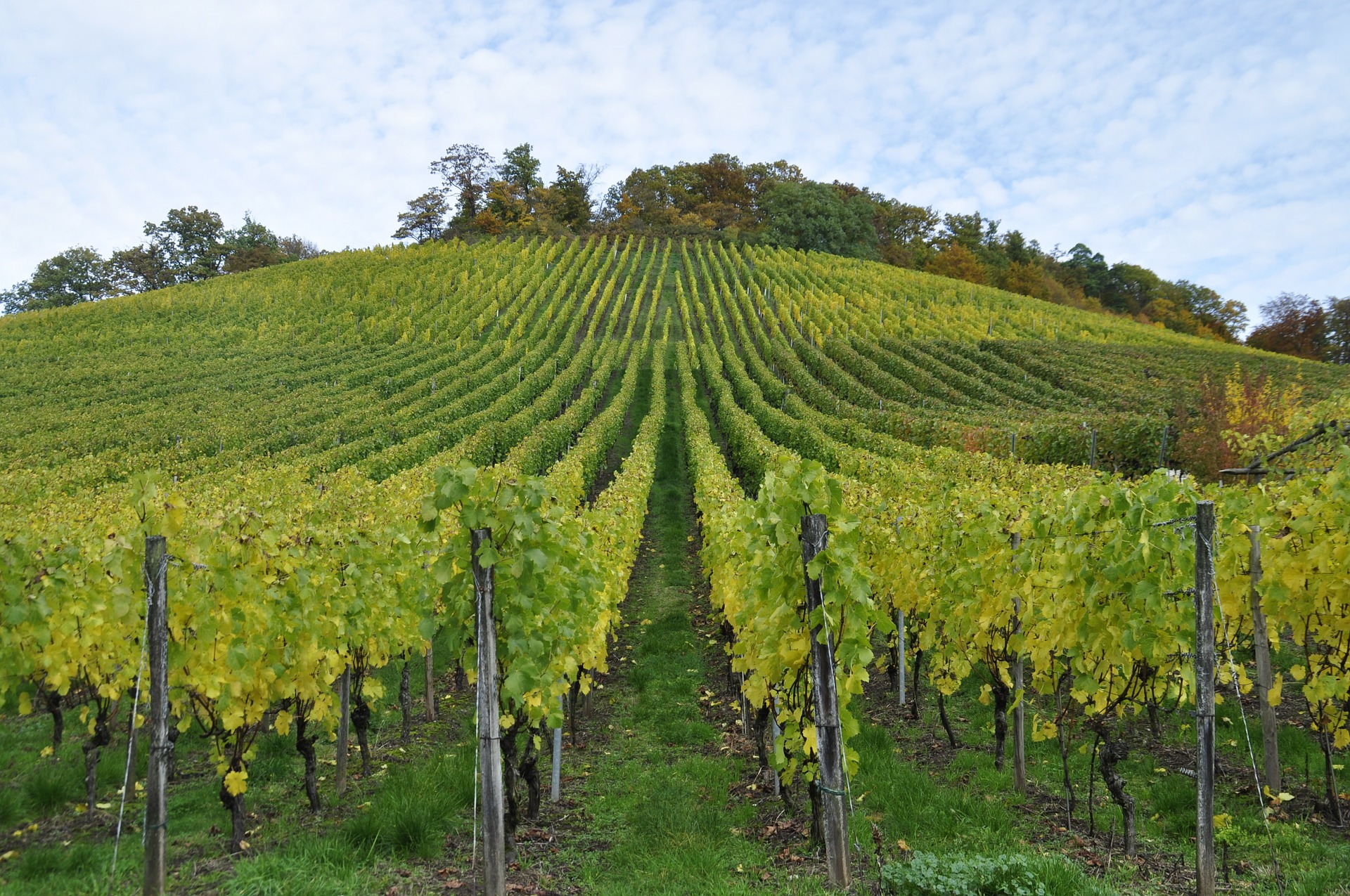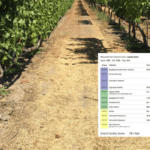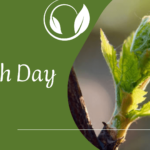After the grapes are picked and safely »stored in the winery« 🙂 it’s time for the last vineyard management activities before grapevines enter into the dormancy phase. As every vineyard is different, it should be managed according to its specific, however, there are some general guidelines for post-harvest management of the vineyard. Those enable winegrowers to prepare vines for resting, as well as to ensure a good following vintage to come.
Post-harvest Fertilization
Although it may seem like nothing is happening with the grapevines after the grapes are harvested, the reality is different. After the harvest, vines continue to allocate resources; from the soil, grapevines are taking up nutrients and minerals, and with the process of photosynthesis they create carbohydrate reserves and store them in permanent wood structures – roots and trunks. Therefore, the post-harvest period is one of the most important periods for the nutrient uptake, as those carbohydrate reserves are used by vine for respiration during the dormancy, and for fueling new growth in the following season.
Namely, from bud-burst to flowering, vine relies solely on stored carbohydrates, therefore bud-break, bud fruitfulness, early shoot and root development, flowering and even fruit set are linked to those stored carbohydrates from the post-harvest period.
A study from New South Wales, Australia revealed that vegetative growth and yield is directly linked to the post-harvest management of the grapevines. Thus adequate post-harvest recovery is crucial for the productivity of high-yielding grapevines in the following season.
When grapes are taken out of the vineyard and not like leaves or canes recycled back into the soil also nutrients are taken away, therefore replacing those minerals is very important. The period between harvest and leaf fall is one of the best times for the nitrogen uptake. It has been calculated that about 30% of vines nitrogen used in the following season is taken up at the post-harvest period of the season before.
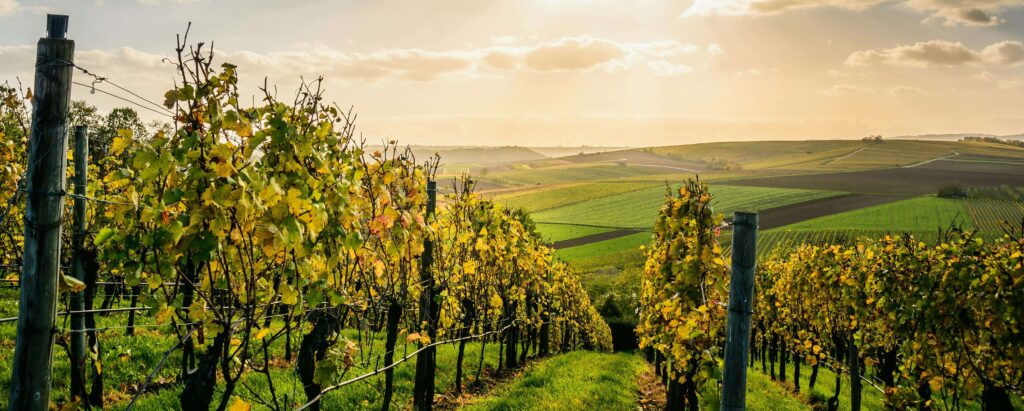
In order to make an effective fertilization programme, a combination of soil analysis and tissue analysis should be done on a regular basis, depending on soil texture and characteristics, crop load, climate, as well as previous fertilization. Note that active leaves are necessary for the vines to produce carbohydrate reserves from the nutrients taken up from the soil. That’s why the timing of fertilization is important. Some suggest two to three weeks after the harvest, but it really all depends on the soil and climate. In cooler climates where the post-harvest period is much shorter than in warm and hot climate, fertilizer should be applied closer to harvest, while in hot climates, fertilizer application may be applied in early autumn.
Fertilizer can be applied also in installments or as a foliar application, depending on the circumstances in the individual vineyard. Apart from the nitrogen (N), phosphor (P), and potassium (K), the fertilizer can include also calcium and zinc, depending on the analysis results. Some experts suggest that about 20% of all nitrogen requirements, depending on the soil analysis, should be applied at the post-harvest period.
After the grape harvest, it is also a good time to conduct soil analysis, as this gives winegrowers the time to create a good fertilization plan for the upcoming season, as well as provide sufficient amount of nutrients into the soil.
Read also: Vineyards Soil sampling guidelines
In order for the vines to get all the necessary nutrients and minerals from the soil, sufficient soil moisture should be provided, therefore post-harvest irrigation may be necessary, depending on the climate, weather and soil texture. While in cooler climate, irrigation may not be necessary as rain will do the job, in warm to hot climate post-harvest irrigation is often a must.
Post-harvest Irrigation
Post-harvest irrigation is necessary for several reasons, first of all, soil needs to be moist so that vine roots can take up nutrients from the soil. In case there is no adequate soil moisture after the fertilization, vine roots can’t absorb nutrients from the soil and instead nutrients may leach away over the rainy winter period. Irrigation help retained leaves for photosynthesizing and accumulation of enough reserves.
Post-harvest irrigation is, especially in a hot climate, necessary in order for the grapevines not to experience water stress, as this can alter the growth pattern for the next season. In case irrigation is not applied at a post-harvest time plus the poor winter rainfall occurs delayed spring growth can be expected. This shows as poor and uneven bud-break, stunted growth, smaller flower clusters, etc. Thus also winter irrigation is recommended if there is less than an inch (25 mm) of rainfall during the winter months.
To match the vines water requirements as well as to prevent the leaching of nutrients below the root-zone, monitoring of soil moisture is advised. To ensure the accurate duration of each irrigation soil moisture sensors together with eVineyard irrigation system can assist so that water is used efficiently and minimal amounts are applied. In cases when post-harvest irrigation is not possible or there is no rain, a cover crop can be fertilized so that organic matter will accumulate over time, and nitrogen will be released when there will be available water.
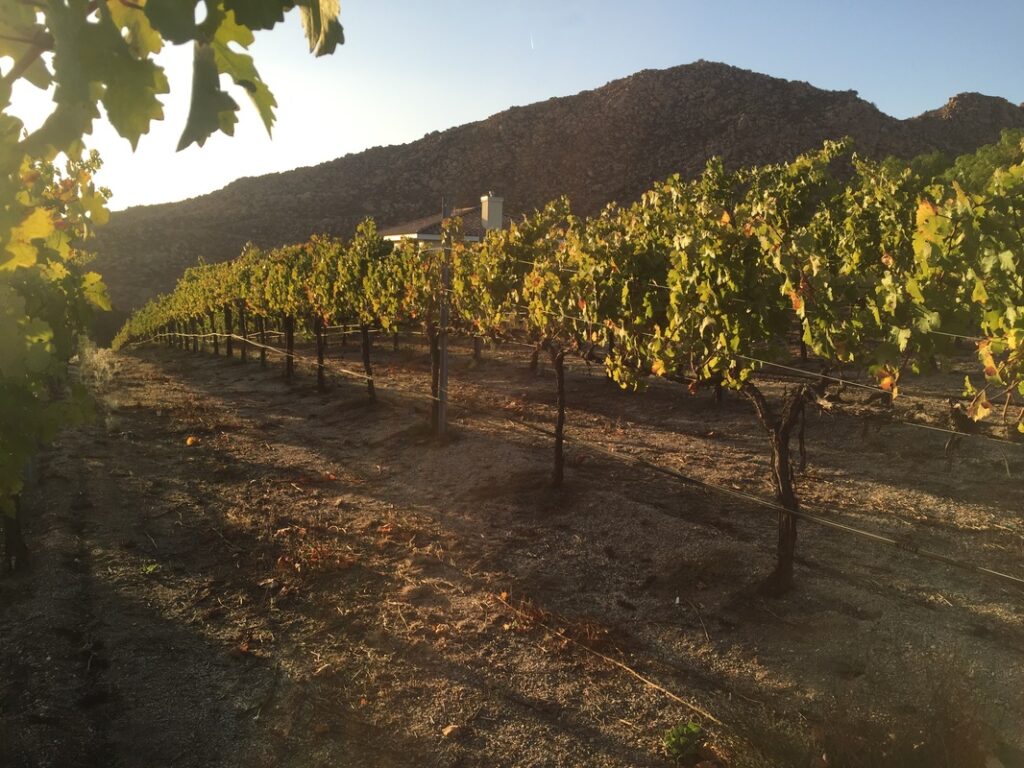
Post-harvest Disease management
Post-harvest disease management is important as the risk of mildews and mites can arrive late in the season depending on the seasonal weather and climate. The high pressure of Powdery and Downy in the post-harvest time can disrupt vines nutrient uptake. While the young vines can become more susceptible to frost and cold damage in the winter due to the disrupted export of carbohydrates from the leaves and also the lignification process in the canes.
That’s why it’s important to keep vine canopy healthy especially from diseases such as Black rot, Powdery mildew, Downy mildew and Phomopsis cane and Leaf spot diseases. At the end of the growing season, pay special attention to the formation of chasmothecium – powdery mildew over-wintering, spore-forming structures, which can cause issues in the following season.
As during the growing season, also at post-harvest period its important to limit the possibility of fungal infections with sanitation measures, such as keeping the surrounding areas free of weeds and tall grass, as well as to prune and remove all the black mummified fruits. In areas with high fungal pressure, pesticide control directly after the harvest can be applied.
If during the growing season you notice that vines are diseased from viruses or trunk diseases (like Esca), fall is the time to cut back the grapevines and film the cuts with the protective coating, or in the worst case, to remove the infected vines from the vineyard.
Conclusion
After the harvest, winegrowers can quickly forget about the vines and focus solely on the winemaking process – but this can quickly strike back. Inadequate amount of fertilizer and water at the end of the season can result in low level of stored carbohydrate, lack of macro-nutrients, and dry woody tissue. This can lead to winter injuries, uneven bud break, poor and uneven shoot growth, and even poor set. Once the chlorophyll in the leaves begins to break down, the leaves change their color and no more carbohydrate reserve can be produced. Therefore, make sure to keep canopy healthy as long as possible with good pests management and irrigation cycles also at the post-harvest time. That way, the vines will be able to produce enough carbohydrate reserves before the leaf fall. Good post-harvest vineyard management is crucial to prepare vines for resting and fruitful growth in spring.
Sources:
Holzapfel, B.P., et al., 2006. Manipulating the Postharvest Period and Its Impact on Vine Productivity of Semillon Grapevines. Am.J.Enol.Vitic 57:2, 2006
Northcutt, G. 2014. Post-harvest irrigation can help prevent uneven vine growth next spring. In: Western FarmPress. (online)
Grapegrower&Winemaker. 2017. Energising Viticulture: Sam Dowman Post-harvest grapevine management. In: Grapegrower&Winemaker, Issue 638.
Obuya, J. and Tsolova, V. “To do list” for post-harvest vineyard management in Florida. FAMU, Center for Viticulture & Small Fruit Research. (online)
Macmillan, C., The Importance of Post-harvest Irrigation and Fertilization. In: VineyardTeam.org
Smith, J. and Holzapfel, B. 2014. Post-harvest care of grapevines: Irrigation and nutrition. GWRDC, factsheet april 2014.

